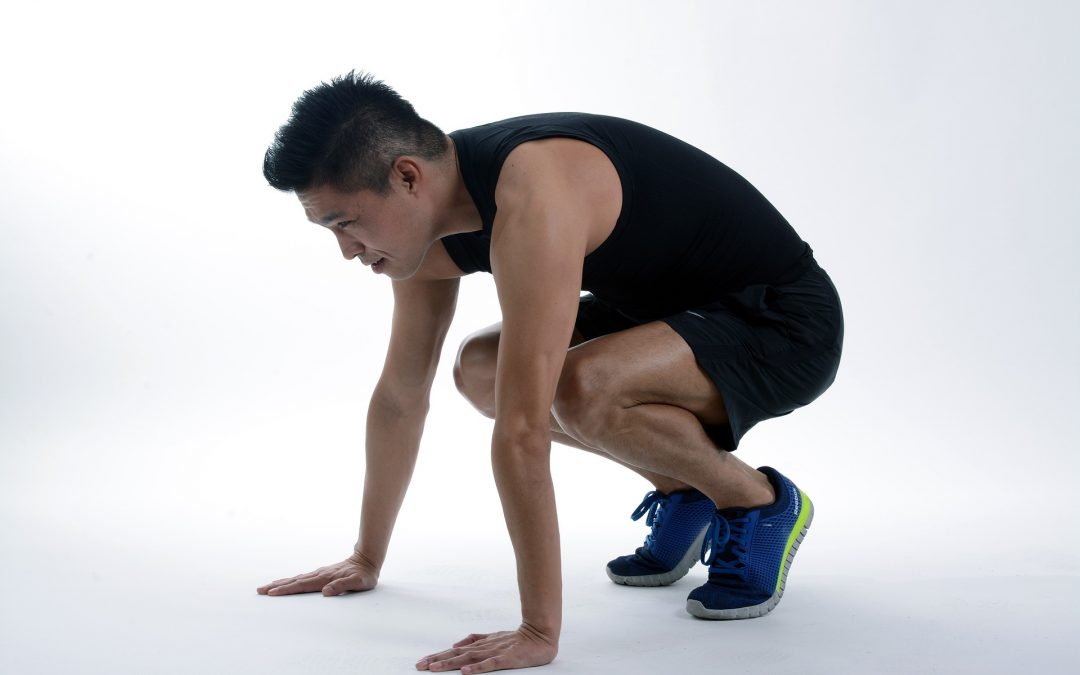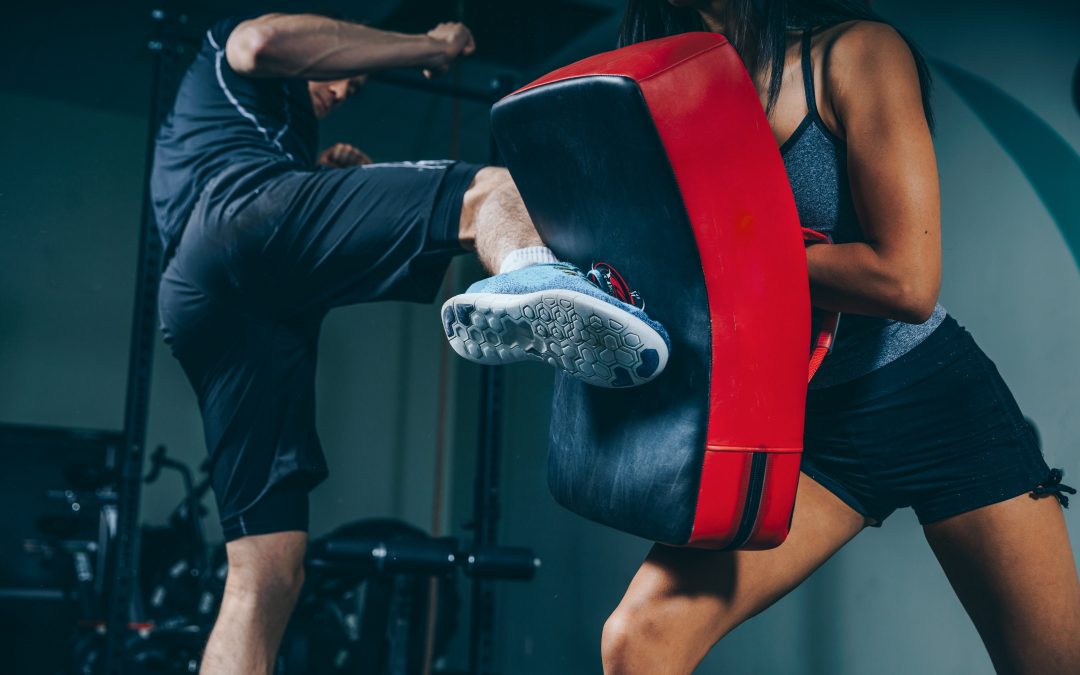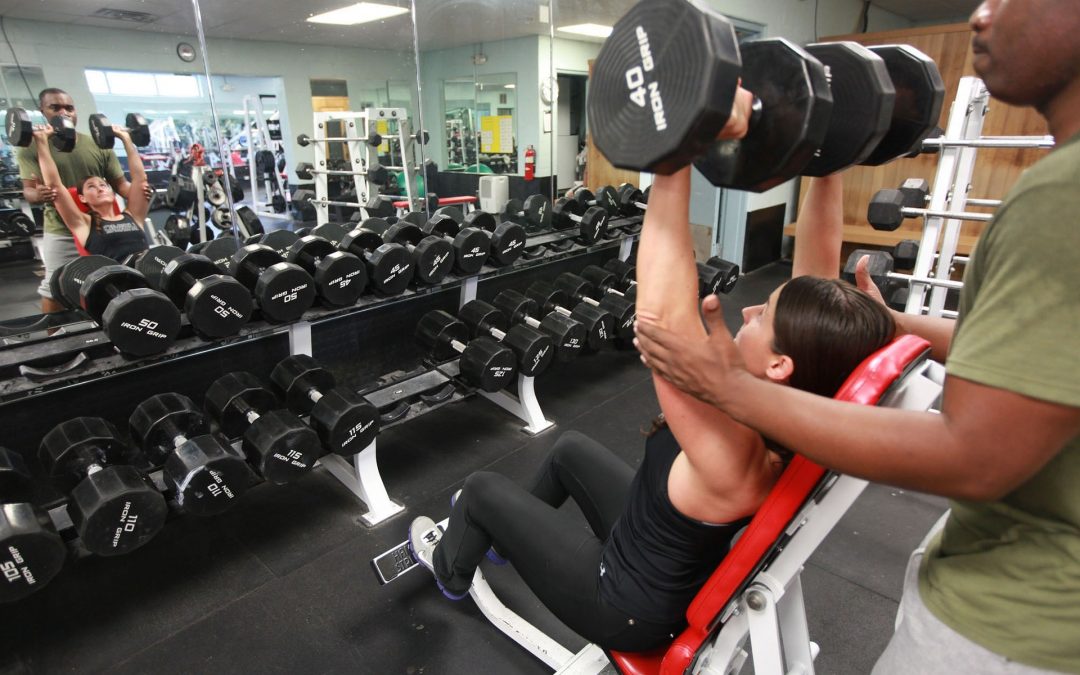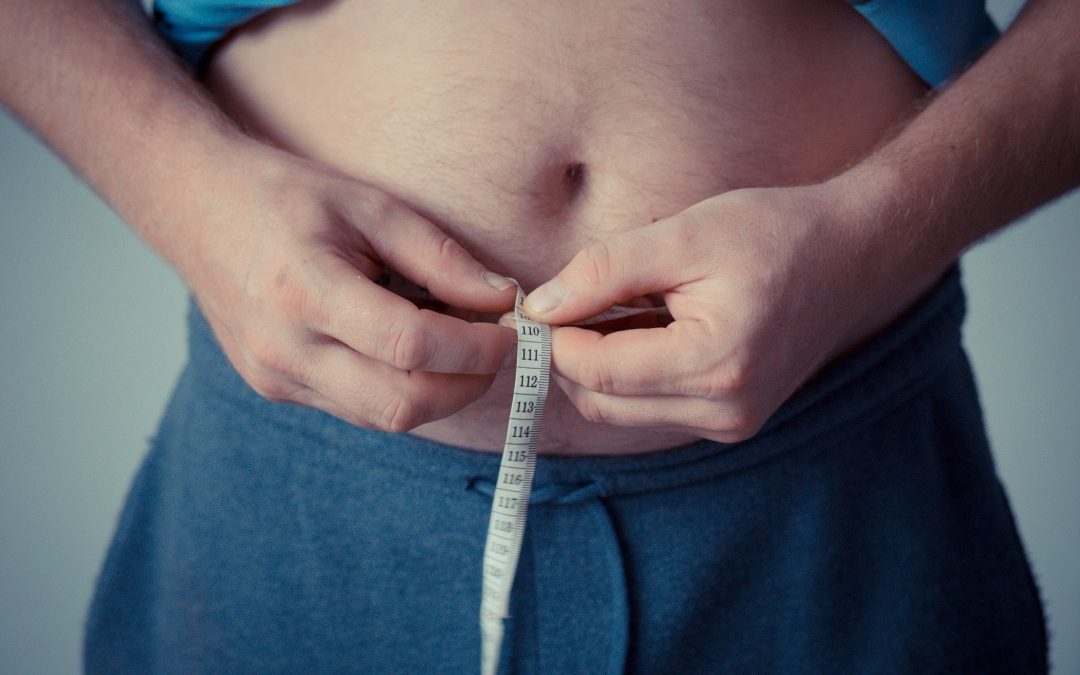
What are plyometric exercises?
Plyometrics (or ‘plyo’ for short) is a form of training involving the use of an eccentric (muscle-stretching), an amortization (short rest) and a concentric (muscle-contracting) sequence of exercises which is often referred to as “jump training”. Strength training usually brings the body’s cardiovascular endurance and muscle adaptations up and going, while plyometrics relies on short bursts or explosions, generating maximum force in a short amount of time.
Plyometrics completes some sports training routines because of its focus on the speed at which they can produce power from their bodies, or generating the most force within the least time. Olympic jumpers or sprinters execute these kinds of exercises when running or jumping and go through many kinds of plyometric training because plyometrics are usually done by people in peak physical conditions.
Although highly beneficial in endurance, speed and strength, it is extremely important to keep in mind that these exercises are geared towards those who are more highly trained or are in somewhat already good shape. These exercises can cause stress to the tendons, ligaments and joints in the lower-extremities like the knees and ankles. Because of this, you should gradually add them into your routine and not jump right into them, literally. It’s important to go at a gradual pace building up your endurance and strength rather than pushing your body more than it can take. Keep in mind that muscle power and muscle strength are two different things. Power is determined by how much time is needed by the muscular strength to be converted into speed. Power = mass x speed / distance.
Another thing to consider is your core strength as the core holds your entire balance. Doing these exercises requires a proper balance because they usually target and use the entire body to execute these moves. It is important to observe how well you’re able to execute the exercises because improperly doing them can result in injuries. Doing at least 7-10 minutes of warmups can help loosen up the muscles and warm up the body, and in turn cooldowns are required after each session.
Since these exercises require no equipment, they can be done most anywhere. Apart from allowing you to sprint faster and land higher jumps, plyometrics can also help with changing direction quickly and improve performance in most sports that use the lower-extremities. This results in excellence in agility, stability and balance which in turn allows your muscles to work efficiently.
Examples of plyometrics incorporated into regular moves:
1. Squat Jumps
These are typically your regular squats, but jumps are added in between squats. These increase the strength needed to squat down and stretch and contract the muscles while jumping up and back down
2. Burpees
Burpees are explosive because of the range of motions needed to complete them, by starting in high plank position, jumping the legs forward, jumping up and then repeating it all over again. These are challenging moves and can really put strains on many parts of the body, plus proper breathing is a must.
3. Push-Ups with Clap
Push-Ups are already a very challenging exercise that requires good muscle-mind coordination using the arms, but adding claps makes it an explosive move.
4. Box/Depth Jumps
This one is explosive because of the coordination used to jump up and jump back down. The height of the jump is usually 12 to 36 inches high and can even be done with one leg at a time to make it even more challenging.
5. Reverse Lung with Knee-Up
These are regular lunges that include a jump when bringing the opposite foot back to the chest. It is important to land softly and carefully so as not to injure your ankles or knees. These are usually done in quick intervals to increase the explosiveness.
Many plyometric exercises actually resemble the hopscotch and jump roping games we used to do as kids, and we’re unaware that some of the exercises we regularly do are already forms of plyometrics. Jump roping, jumping squats and single leg hopping to name a few. Muscle rehabilitation also makes use of plyometric exercises to condition the muscles to endure more strain. A muscle-stretch or eccentric contraction can be more forceful than a muscle contraction. This is necessary to be added to rehab to know how far the muscle has healed and how much more it can take. Muscles that do not undergo this training can result in an injury relapse.

5 Reasons to Work Out with a Friend/Buddy
Working out alone can get lonely and cause you to lose motivation. As with other things, exercising with a friend can double the fun. According to experts, a particular percentage – around 40% – of participants who enroll in a fitness class drop it shortly after they begin when attending alone. But if they enroll with a friend, the rate decreases by a significant 6%. Social support usually encourages physical activity. Apart from this, working out with a friend can help you stay motivated and focused, work harder, hold you accountable and many other things.
Because of this, choosing the right partner to come work out with you is also essential. This can make or break the progress that you come to.
Accountability
You and your partner of choice can hold each other accountable for your routines. If one is unable to find the motivation they need for the day, the other can remind you why you started in the first place. This goes both ways. Ditching your partner or your friend who wants to go for a run or to the gym can sometimes make you feel guilty because of your established partnership. Guilt can be a big motivator in this field, and the extra accountability of showing up can make for a successful routine for you both. Remind each other why you started, why you need or want each other there, and what you’re aiming for in the first place. This is the only time you can guilt-trip your friend without the bad taste in your mouth.
Motivation
More often than not, working out with a friend can make you harbor a little friendly competition. If you’re both just starting out, see who can push their limits the furthest. Over time, it can happen that you or your friend can run that extra mile, lift a heavier load, do more reps, and the likes. You’d hate to be the one left behind, so you try and challenge yourself to reach or even surpass their level. A little friendly competition never hurt anybody. Just make sure that the competition stays friendly and the ways in which you’re trying to reach your goals are always safe. Always keep in mind that your health and safety should come first, and if you are unable to do the same things your friend is able to, you can work on them consistently to get there! More motivation.
Trying Something New
If you’re both tired of your same old routine and looking to switch things up, why not try a new program together? You could both be interested in two different things, if your friend is more into yoga and you’re more into HIIT, try to do both together and see which one works better for you both! There’s no harm in trying and you may even develop a new hobby together which makes for a good bonding session. Trying new things seems scary at first, but with the right person by your side, it’s bound to be fun.
Safety
These days we make use of the buddy system in doing everything, this is also to have someone look out for you and you looking out for someone just the same. Running alone in the wee hours of the morning can get dangerous if you do it alone, you might run into an injury and no one will know. You might also encounter dangerous people, which is increasing rampantly. Going to the gym, many people have also reported being followed into locker rooms or their own cars! It’s just much safer to have someone around. Plus, some exercises even require your own spotting partner like lifting heavy weights. Look out for each other and keep each other safe.
Setting Mutual Goals and Celebrating the Milestones
Maybe you and your buddy have had your sights set on something like a personal best time, longest mile, common race you want to run, goal weight, dream body. Whatever the case, working towards a common goal can really be something worth looking forward to and working towards together. This will form a new bond between you and your buddy, as well as celebrating the same thing together can really make things more fun and be a big motivator to keep going. This can also strengthen your friendship.
Let’s not take away that working out with a buddy can just be more fun in general. Especially if it’s someone that you can laugh with about mistakes, and talk about many different things while working out. Choosing a buddy you’re really comfortable with can contribute many great things to your fitness path.

Purpose of a Spotter in Weight Training
When weight training, we often see that people don’t train alone. Instead, there are people who assist those who are bench pressing or lifting quite heavily. These people are called spotters. Like other sports and activities, spotters are those who help and support a trainer when weight lifting. Usually, their roles are to be able to help a trainer should anything go wrong, or assist them in lifting, especially if a trainer cannot complete a lift. Everyone, no matter how experienced works or have started out working with spotters and some even still work with them.
That being said, it’s also important to find a good spotter to rely on and trust. While spotters are usually also personal trainers that work at your gym, it can also be anyone you trust and has experience lifting as well, like a friend. By working with the same person, over time, you’ll both learn what the other may want and need, when to intervene and when to stand back. Spotters can also be essential to the effectiveness of a workout.
There are plenty of reasons that spotters are completely necessary when weightlifting.
Ensuring Proper Technique and Form
Weight lifting is dependent primarily on your technique. Incorrect technique can be extremely harmful to weight lifters and can cause serious injuries. It’s a spotter’s duty to help another trainer with this, since they can observe and ensure that the lifting being done is being executed properly. Sometimes the assist is needed to take full advantage of the range of motion required for the lifting you’re about to do. Weight training also requires the maintenance of form and control of movements. This can prove to be difficult when rushing or the body is tired. Spotters can help improve or correct this.
Protection from Dropping Weights
One of the most common injuries when weight lifting is from dropping the weights. Trainers who attempt to lift a heavier load than what they’re used to can risk dropping the weights out of exhaustion. Weights can fall on the trainer and lead to severe injuries. Weight dropping or re-racking weights can also damage these equipment. Having a spotter can prevent you from dropping these weights, saving you from potential injury and saving the hassle of damaging any equipment.
Protection from Straining Yourself
Spotters can also help weightlifters by preventing any injuries from strained muscles. Weightlifters who attempt to lift more than their normal load can and will often end up experiencing injuries due to strain. Spotters can help you lift the weights off you if you can no longer carry the load. This is important when training because serious injuries will take longer to heal, therefore slow down the process of further training.
Improvement
Working with a spotter you trust and listen to can really help improve your overall performance. A spotter can easily see when you’re doing movements or forms that are incorrect, can help you lift weights that you’re having significant trouble lifting, and see how much you’ve progressed later on. They can even give you a confidence boost and be the safety net you fall back on when you need to lift more challenging weights or try new exercises.
Increased Workload
Working with a spotter can be essential when you’re almost at the point of exhaustion and don’t want to do an extra rep or two. Nearing the end of a set, a trainer can really feel the challenge as the muscles are tired. A spotter can help you keep going and be there to assist you if you can no longer meet the challenge, or help you meet it in a safer way. You don’t sell yourself short and do a short cut to finish your workout, to rush your workout and to neglect your form. A spotter is there to help keep you accountable. It’s just like being in a partnership.
Claims of possible placebo effect can even take place, as even just having a finger on the barbell can trick your mind into believing that there is someone there to assist you, making the load feel lighter and easier. This allows you to keep going, even if it’s only really you doing the work.
Once your body is used to lifting this way, you and your buddy can take turns spotting each other. Always remember that spotters are there to assist, but not do all the work. In fact, spotters shouldn’t intervene unless absolutely necessary, so as not to hinder the progress of the trainer. Remember that help at the gym doesn’t mean you’re not as strong, it means you’re determined to get strong. Strong people help strong people.

Combining Meditation with Exercise
Meditation is a training of the mind in the sense of awareness and gaining a new perspective. More than anything, meditation actually helps you focus your mind on your own attention and energy. This encourages mindfulness, the ability of our bodies to be present in a moment, to rest and be calm and comfortable in the now and to be fully immersed in the things we do in a particular moment.
Contrary to popular belief, meditation doesn’t necessarily require you in a sitting lotus position, but the truth is that meditation can be done while sitting, standing, lying down and even walking. Sitting still is still dubbed the best position to get a meditation session in, as it keeps the body and mind attentive since all are kept still and calm while still keeping your body attentive, versus the relaxation the body experiences when laying down. Short leaps of meditation can be done by putting the hand over the heart and taking 2-5 deep, conscious breaths to reset you.
Often, we are too consumed by just being able to get through most anything these days and we forget the purpose of why we are doing these things, and how exactly we are executing them, which may sometimes be incorrect but are still done for the sake of finishing these tasks. This is applicable to most any of our daily tasks, but is especially important when it comes to exercising.
Many studies have shown that meditation and exercise can individually be beneficial to a person’s overall health and mood, but being able to incorporate them with one another can make for a more effective fitness routine. Exercising helps increase the flow of bodily fluids like our blood and oxygen, which delivers biochemical boosts that help the brain feel overall happier. Meditation is able to activate the parasympathetic nervous system, which lessens the stress responses in our bodies and helps calm down the central nervous system. This affects our prefrontal cortex, in charge of our thought analysis which helps with controlling our judgment and emotions. Better control and contact with the prefrontal cortex improves great stability and concentration.
But with this comes great responsibility; someone who would typically be interested in developing their mindfulness and being centered has to be consistent, understanding his or her own mind. This consistency can form this habit and change the way the mind works in a great way, affecting any and all future actions. Doing things in a more calm and collected manner is obviously better than doing things with a cluttered mind. It opens up a new way of doing things in a whole sense.
Exercising relies heavily on the mind-muscle connection. A lot of the time, it gets us frustrated enough to wonder why we aren’t seeing enough results, but we’re still feeling the pain and soreness that comes with exercising. Incorrectly executing exercises can lead to muscle strains and other injuries. We may not be working the correct muscles needed to exert the effort with each motion, which is why we experience this soreness. Apart from this, meditation can even promote self-healing from injuries, surgeries and healing from many more bigger sicknesses and even diseases because the mind is a very powerful tool.
Studies also suggest that the effects of both can multiply when they are done together. Both can help ease being overwhelmed and feeling anxious, which in turn can help prevent or decrease depression or depressive moods. When we start doing things with more of our mind put into it, it really changes the game for you. When added to exercise, it really helps your brain communicate to your body what it needs.
Be sure to remember, though, that meditation is also a skill you need to develop so keep at it to be able to do it successfully. It takes a little more time to get comfortable with our minds, and it’s not exactly going to be pretty all the time. In order to come to terms with how our minds work, we also need to remember that with good thoughts also come bad thoughts. Thoughts we have yet to forgive ourselves for, harbored feelings of anger, hatred or even guilt. Meditation is supposed to help accept things for what they are, and strengthen the mind to overcome them. By practicing this again and again, we help build our minds a fortress that blocks out negative thoughts, or help you feel them if you must, but keep you from dwelling on them.
Primary Types of Fitness Activity Trackers
The world we live in has become increasingly inclined to getting on the right track to being healthy. With recent technological advances, it’s no surprise that the fitness tracker has gained instant sensation from health enthusiasts all around. Whether you’re at the gym religiously, or just want to see how much movement you do daily, fitness trackers have proven to be one of the most sought-after products today.
If you haven’t gotten the memo, fitness trackers are devices that you typically wear on the body like any other accessory. Many of them come in forms that look like watches or bracelets. Fitness trackers are able to measure how many steps you walk, how many miles you’ve reached by walking, the increase or decrease of your heart rate, and other trackers are even able to track how many calories you’re burning!
Of course devices like good ol’ pedometers and heart-rate monitors and machines of the like have existed for years, paving the way for fitness trackers to be invented. But they’re usually bigger, bulkier and less sleek than wearing a band on your arm that can calculate everything you need to know.
Another thing that makes the fitness tracker trend more compelling is that they are so sleek and seamless. They can be worn as regular accessories that blend in effortlessly with your everyday outfits and lifestyle, so you can go about your normal routine but still be able to track your fitness progress. Lucky for you, there are tons and tons readily available for you in the market, depending on your fitness lifestyle and your preferred look.
More common fitness trackers come in the shape of bracelets or watches. Popular variations of this include variations of the Fitbit watches. For 2020, one of their best-ranked fitness trackers include the Fitbit Charge 3. Heartrate and activity tracking are available on this device, and it is waterproof. Its lightweight design fits around the wrist in a sleek fashion. Garmin is another reputable and well-loved brand, its products are some of the most accomplished in the range. While this device isn’t exactly built for pro-athletes, it features an innovative technology called body battery which indicates how much energy you have and can therefore dictate when the best time to exercise is! These and other widely recognized brands offer different kinds of bracelets and watches at different price points and features depending on your preference. Other brands also offer budget-friendly trackers that help you track and monitor your health just the same, without the steep price. After all, the best gear is one you’ll actually use.
There are also watches available specifically for those that run or bike. GPS is crucial and essential, as these will keep you from getting lost while on a trail or track. Tracking your pace and distance while cycling and running also require a GPS tracker. Specific trackers are also needed for swimming, though they may take on a different form. Some watches are available specifically for water sports, but they aren’t all built the same. Trackers in the form of goggles have also been released. Waterproof goggles took a forward leap in the past year. Leading in this category were the FORM Swim Goggles. These can track your overall time, pace, stroke and heartrate. These show you your progress right in front of your eyes as you wear them while swimming. The functionality is simply unbeatable. These can even work well in low-lighting, as well as outdoor pools, and batteries last up to 16 hours. Garmin also makes some of the most top-notch products for swimmers, but are limited to watches. They’re also able to track how many strokes are taken per lap, a swimmer’s average pace, basically all the essentials.
However, some fitness trackers don’t come in just these forms! Recently, we’ve discovered that they even come in ring form. That’s right, fitness trackers that are small enough to fit around the finger. An example of this is the Motiv Ring, a titanium body with a thickness of 2.5mm, the ring can do what most fitness trackers can do as well: monitor your sleep, heart rate and fitness activity. Its battery can even last up to 5 days. All though this device is more seamless, it does not include a screen to indicate and determine your current progress in real time the way watches can, which is minus points for convenience. You’ll need to connect your device to the app via Bluetooth to monitor your progress.
With its popularity and variety, you’re bound to find one that fits your lifestyle and budget. But make sure not to let these trackers take over your life, as they are made only to track your fitness, not exactly to help reach your goals – that’s on you!

5 Tips to Gain Body Mass without Getting Fat
For those who are aiming to build their dream body but don’t have enough body mass, bulking up is supposedly the fun part because of getting to eat whatever you want. But doing this ends up making you gain unnecessary fat, resulting in ballooning instead of bulking up. This will make it harder for you to actually bulk up and build your body. This part is a little challenging because you’re working out to build muscles and burn fat, but also need the growth of muscles but have to work to prevent the accumulation of fat. There are a bunch of different factors that go into this.
- Increase calorie-intake but eat clean
Eating junk, processed or fried food can actually add more fat than the muscle you’re working towards. Eating clean is essential to anyone who wants to build a good body. Focus on eating food that is rich in the proteins, healthy carbs and dietary fats and nutrients your body may need in this period of change. Carbs are necessary for many diets, but make sure the amount you’re consuming is reasonable and still considered healthy. These can come from the likes of sweet potatoes, oatmeal, brown rice and whole grains. Working out will cause your body to need replenishment for insulin and glycogen.
- Avoid over-exercising
If you’re hitting the gym doing cardio or high-intensity interval training can actually be slowing or completely holding back any and all progress. People that over-exercise actually destroy their metabolisms. The excessive amounts of time spent exercising actually force the adrenaline to dig deeper and deeper, functioning at a heightened state, which usually doesn’t allow for recovery.
Building up this damage can actually make the adrenals force rob the amino acids and hormones from the other organs. This can even target the thyroid which, in turn, can cause a variety of different problems. This causes organs to function slowly, which also drags the metabolism down with them. Such a process can also deplete your testosterone which is essential to that muscle growth you are aiming for.
Everyone’s endurance and strength levels differ and rely on factors like your sleep schedule and diets. It’s important to give yourself periods for recovery as well, so as not to let adrenals damage your muscles and progress further.
- Get enough sleep
In connection to avoidance of over-exercising, rest is essential to any workout routine. The recommended amount of sleep that anyone trying to get lean and bulk up is7-9 hours per night. Sleeping actually releases growth hormones, which is crucial to building your body. A 2010 study compared sleep of 5.5 hours versus 8.5 hours, the lack of sleep decreases fat loss by 55% and increased the loss of fat-free mass or muscles by 60% in just a span of two weeks. Cortisol or the stress hormone increases with decreased sleep, and good hormones like growth hormones and testosterone decrease.
- Trade in protein powder and try to eat more protein-rich foods
Research shows that whey and other forms of protein powder can be really beneficial to the bulking-up process, but some people may actually be allergic to these powders. If this is the case, chances are you may balloon from fat and water weight. Allergies cause inflammation, this causes insulin-resistance and unwanted fat gain. There are better options that can come from foods like eggs, rice a bunch of other fruits and vegetables that contain more amount of protein and in whole amounts, too.
- Track progress
Analyze all necessary measurements like body fat percentages and circumference measurements. This will help track your progress and help you see your progress. Try to track this progress can be easier between at least 2-4 weeks. See if any of your habits need to be changed to reach your goal weight. Caloric intake can help fix these deficits or gains that your body goes through.
It’s also important to take into consideration whether your body is in its best condition to bulk up. If your body is already at 10% of body fat, it can be easier for you to gain the weight needed since you’re already lean and the body can optimally distribute the gains where they are supposed to go, neutralizing and differentiating unnecessary fat from needed mass. Being skinny-fat or appearing thin but actually accumulating more fat on the inside can be a disadvantage. Bulking up with a body that is more fat than muscle can result in ballooning. Getting lean is the first step before reaching your desired physique.
Are Fitness Trackers Safe to Use?
There is no doubt that many people have given in to the hype around fitness trackers. And have found that fitness trackers are not just hype, they are accurate and efficient, too. They help us monitor our fitness progress in terms of how many steps we’ve taken, how many miles we’ve gone, how many calories we’ve burned and the likes. But over the years, many articles have sparked concern among health enthusiasts that have invested in the fitness tracker hype. These articles suggest that wearing fitness trackers could have potential side effects and even go so far as to say they can be cancer-causing.
Concerns around sleeping with your phone near by or next to you can be detrimental to your health and contribute to many risks that revolve around cancer. This is because cellphones actually emit radiofrequency radiation, otherwise known as radio waves. Radiofrequency radiation is a form of electromagnetic radiation and can be categorized into two categories: ionizing, such as x-rays, cosmic rays and radon and non-ionizing, such as radiofrequency, extremely low frequency and even power frequency. Ionizing radiation is usually at a higher frequency and higher energy, while non-ionizing is at a lower frequency and lower energy.
Radio waves are emitting non-ionizing radiation from the antennas of the phone. The parts of the body nearest to their antennas can absorb this energy, which in our case is almost always our heads as we use our phones before bed. Because of the increase of cellphone users globally, as well as how long and how often we are using our phones, our exposures and risk increases. Exposure to ionizing radiation has been known to increase risk of cancer, however there is not enough studies and evidence that non-ionizing radiation can do the same.
Fitness trackers are known to emit the same low-frequency non-ionizing radiation as cellphones, at a likely much lower rate since fitness tracking devices work with apps that require cellphone WIFI and Bluetooth, you might be absorbing more from your phone than your fitness trackers. What we do know is that non-ionizing radiation from our trackers can give off similar rays of radiation, but less energetic than our cellphones. Smartphones, Bluetooth and WIFI all emit their fair share of radiofrequency energy. A lack of proof also can’t help back-up the concerns people have regarding these risks.
The National Cancer Institute recommends to limit the time we spend on our phones, especially when we use them so very close to our heads, like holding a phone to our ears during calls. The overheating of these devices can also damage skin tissues. Some experts also suggest taking off these devices while sleeping, so as not to expose the head or brain to the low-frequency waves that devices give off, but more so for peace of mind than anything else. During the day, use fitness trackers you wear on the wrist so as not to expose the internal organs to any radiation. Try to plug in your fitness trackers to computers or phones (if possible), to lessen the transmission of information to your devices. Avoid wearing devices that are worn clipped on to other parts of the body, especially the midsection and reproductive organs to completely avoid exposure in any form. Turn off the Bluetooth on your device, and only sync the data to your cellphones once a day. Monitor your sleep quality with a tracker if you deal with underlying issues where sleep is necessary, and avoid sleeping positions that bring the tracker close to the head. Try to familiarize yourself to your device, try using it for a week to see if it may cause any sort of discomfort.
Of course, these devices undergo many processes to prove that their devices do not pose a threat to the public’s health. In the United States, the Federal Communication Commission (FCC) is responsibly for the guidelines the products should meet. Other countries also impose these guidelines for products to meet. There is a certain amount of exposure to radiofrequency waves that products must live up to, otherwise they are banned or unapproved. All though there is not enough proof that fitness trackers are harmful in any way, this does not mean that they are not risky. It is important to remember that anything in moderation is okay, but anything in excess can be dangerous. Only use your tracker when completely necessary, and try to educate yourself about how much radiofrequency waves your device gives off, or specific absorption rate (SAR). Most devices contain FCC IDs and you can read up on it on the FCC website.

Does sleep help you lose weight?
The verdict is out: sleep does aid in losing weight, but not in the way you may think. The pretty obvious formula for an overall significant amount of weight lost consists of a proper diet and consistent exercise. But if you’re already doing this and still can’t seem to see the difference, it might be because of your lack of sleep. Generally, our sleep needs differ from person to person, but the recommended amount of sleep we should get should be between 7 to 9 hours per night.
Proper sleep actually fights of a lot of things, like excessive weight gain, irritability, stress. They all go hand-in-hand with each other and sets a cascade of different events which eventually leads to weight gain. Let’s start with the obvious: the less sleep you get, the less energy you have. Exercising feeds on your energy to be able to execute these exercises, and of course to be able to do any exercise at all. Less physical activity means fewer calories are being burned. Without the sleep and energy you need for energy-driven motions, you’re putting your body at risk for not only performing poorly but also keeping that unwanted fat stagnant. Growth hormones also depend on sleep to be able to do any muscle building and repairing. The more muscle you have, the higher the metabolism. Not getting enough sleep could really affect the way our bodies burns calories.
Our resting metabolic rates (RMR) is the number of calories our bodies burn when we’re completely at rest, which are usually affected by our age, weight, height, sex and muscle mass. Studies suggest that sleep deprivation tends to lower the RMR. Which in turn connects to the way our bodies build muscles. Poor sleeping patterns can cause muscle loss. This is because muscle burns more calories at rest than fat does. When these muscles are lost, the RMR decreases.
One hormone that spikes in the morning to provide our necessary energy for the day is cortisol. This hormone usually reduces during the night time, encouraging us to sleep. When we have poor sleep habits and our stress is in a higher state, cortisol actually remains elevated. Stress affects sleep, and sleep affects stress.
Another is that staying awake until later leads to wanting an unnecessary snack or two. People that don’t get enough sleep may more likely have a boost in appetite or craving because the body needs more energy to stay awake. Another thing that not enough sleep causes is hormonal imbalances. Because of these imbalances, we’re more likely to feel hungry when we really don’t need to eat. The appetite hormones like leptin and ghrelin are made the most during our sleep, which means that the more we are awake, the more insatiable these are. More often than not, this leads us to consume more than enough than we need, thus leading to weight gain.
Poor sleep can also put our bodies at risk for insulin resistance. Insulin is actually a hormone that is responsible for removing sugar from our bloodstreams into our body’s cells to be used as energy. When our cells because resistant to this, more sugar remains in our bloodstreams and our bodies actually produce more of this hormone to compensate. The excess of this hormone makes us hungrier and basically commands the body to store more calories as fat. This is the most risky factor our lack of sleep can contribute, because insulin resistance is a gateway for not only weight gain, but also type 2 diabetes.
So while sleep does not necessarily help you drop 10 pounds a week, it proves to play a major role in how you lose weight. If you’re not unnecessarily staying up and actually have trouble sleeping at night, the best thing to do first is to consult a medical professional to rule out any problems that might need treatment or medication. Once these are ruled out, it may possibly be connected to high levels of stress and even your lifestyle. There are many things that affect sleep, and there are also a number of things to try to improve these sleeping habits.
First, prioritize relaxing and doing things that are more calming during the evening so they can help your body wind down and find rest. Avoid stimulating activities like watching TV shows that may hype you up or cause an increased heart rate (violence, action, horror and the likes). Avoid also using your gadgets like laptops, tablets and phones when trying to find sleep because of the blue light this may give off makes it harder to sleep. Reduce drinking caffeinated drinks a couple of hours before bed and finish your meals two to three hours before hopping into bed. Also make sure that your body is getting enough stimulus and activity during the day, because lack of this could also be contributing to being unable to sleep.

Importance of Rest Days in Exercise
Many people talk about the motivation needed to start working out, consistency to keep going, and determination to achieve results. But no one really stresses the importance of rest days. Sure, once we all start working out, it’s easy to develop a mindset that makes you want to keep doing it consistently every day. While it’s great that you’ve found the drive to keep going, it’s important to remember that going hard each day isn’t exactly the best and only way to achieve the results you’re going for.
Rest days give way to a number of things to take place, for your body to recover and repair itself. They’re just as important as your work out and workout regimens are said to be successful when you give yourself some time to rest. Skipping rest days can result in unwanted injuries, over-training syndrome and even burnout which brings about a couple of problems like decreased performance, fatigue and may even cause hormonal imbalances and poor sleeping patterns which affects the overall mood.
An ideal rest day looks different for everyone, depending on a bunch of different factors. Remember that rest days don’t mean you’re being unproductive, but a lot of rest days are dependent on your lifestyle outside of exercise. Here are a few reasons why rest days are just as important as the days when you exercise
1. Allows recovery
Exercising actually creates microscopic tears in muscle tissues but it is these rest days that allow body cells called fibroblasts repair them. This results in a stronger and renewed muscle and tissues. Different factors like the kind of training you do, how experienced you are, the volume of training you do per week and even your age can all affect how much recovery you would really need.
The recommended amount of exercise per week for the average adult is at 150 minutes per week, so 30 to 60 minutes doing moderate exercise or training harder 20 to 60 minutes per week. This requires at least 48 hours for recovery per session.
Muscles also store carbohydrates by glycogen, which in turn is used to fuel your workout. Rest periods gives your body ample time to replenish this lost energy before the next time you work out.
2. Prevents fatigue
Over-training syndrome sends our muscles into overdrive and depletes the muscles’ glycogen levels, which can result in our muscles being more sore than usual. Even when one isn’t working out or doing anything physical, glycogen levels still need to refill.
3. Reduces risk of injury
Injuries can happen when your muscles aren’t fully healed yet, which can cause you to work with a bad form, be unable to fully exert the motion needed for a certain exercise, or even drop a weight. It’s really important to figure out which muscles have been strained also, to be able to determine which muscles need to heal and maybe even need a change in form while working the muscle.
4. Improves performance
Feeling rejuvenated helps boost your overall motivation to do your workout. Exercise generally produces energy and mood-boosting hormones likes adrenaline and cortisol, however over-exercising can also overproduce these hormones. Getting ample sleep and rest helps put these hormones in check.
Rest days are also different for various types of training.
Light cardio – Does not necessarily require rest days as this consists of activities such as leisurely walks or your everyday routine, which is considered safe enough to do daily.
Moderate/vigorous cardio – This requires a couple of active rest days. It’s recommended to take a rest day every three to five days. These rest days can include doing lighter workouts like stretching.
Running – A more intense form of cardio that may need more rest days, especially when training for a vigorous test of agility and speed, like marathons, triathlons.
Bodybuilding – Need alternating rest days between different muscle groups so as not to strain them.
Weight loss – Rest allows for more calories to be burned at rest and helps muscles rebuild themselves. When feeling well-rested, it is easier to stick to the routine.
Rest days may also consist of adding lighter workouts, low-impact cardio like just taking a walk outside, to riding a bike, yoga is also another alternative to still get into a fitness routine to rest as it has been proven to help with body awareness and mindfulness as well as the correct breathing and flexibility. Incorporating this into your routine helps you to stay active but still give way for your muscles to heal.

Do Weight Loss Supplements Work?
We’ve all heard about some weight loss pills, gummies, or even tea and coffee in the market that has all these claims of helping you lose weight – and fast! Metabolic boosters, fat burners or craving killers. The appeal of these things surely sells. Unfortunately, some of them seem too good to be true. They have multiple facts at once that just don’t seem possible by taking one pill for x amount of time and not doing anything to change your lifestyle. Losing weight isn’t something that happens overnight, and magically because of a pill. Set realistic expectations for yourself.
Weight-loss pills, over-the-counter drugs, non-prescription drugs, dietary supplements can all be used as tools to help with weight loss, but at the same time you can’t rely on them fully. Little research is done about these products and even then, those without approval for food and drug associations are still on the market and being consumed by quite a hefty number of people.
Funding and research goes into prescription drugs for treating obesity, which is a gateway to other problems and especially puts the heart at risk. Some researchers claim that a couple of weight-loss pills did actually aid in the weight-loss of some of their research patients. Though research is currently being conducted, understand that conditions within research facilities and under research in generally can still be better as opposed to regular settings. Researchers don’t know much about the potential benefits or risks. It’s important to consider that such weight-loss supplements and pills can be somewhat beneficial but their results are not as fast and effective as what the pictures sell, and that sometimes they don’t work for everyone especially if your lifestyle doesn’t change.
Understanding regulations depends on two general categories namely ones for non-prescription drugs and ones for dietary supplements. Regulating the productions and marketing that these two types of treatments undergo different processes. For non-prescription drugs, the manufacturers of these drugs are required to provide the Food and Drug Administration (FDA) with results from clinical human trials to show that the drug is safe for consuming and poses no threat to mass health.
Dietary supplements, on the other hand, are responsible for ensuring that their products are safe and they are using an honest marketing strategy including but not exaggerating its benefits. However, these aren’t subject to FDA approval before marketing, and their research quality to support their claims may vary. Once the FDA is able to approve that a supplement is considered unsafe, they can possibly ban the product or as manufacturers to withdraw them from the market. False or unsupported claims can also be grounds for termination of a manufacturing company. All of these differences may make it difficult to get FDA-approved, which is why many manufacturers result to illegal distribution.
Limited research can also contribute to why many of these drugs and supplements are difficult to market as meet FDA standards. Products aren’t automatically deemed safe simply because they are made up of more natural components. Some might actually even contribute serious health issues. Drugs and pills like antibiotics can harm the liver and apparently, so can weight-loss pills. Ephedra is one example of a herbal stimulant that is used in many weight-loss products, but was proven to cause adverse effects like mood swings, high-blood pressure, increased or decreased heart rate, strokes, seizures and even heart attacks which the FDA has now banned.
Because of all these factors, it is important to do ample research on these products. You may want to go for those that have already been approved and have great reviews, don’t just jump on the bandwagon for popular ones that have no proven claims. Also include your physician in your plans if you do decide to take these kinds of pills or supplements. Those with underlying health conditions, are presently taking some form of medication, or those who are pregnant or breast-feeding will be advised against taking anything of the sort.
Remember to manage also your expectations, as expecting the claims of these drugs without being backed up by any ample research is just setting yourself up for disappointment. Some claims are too good to be true and even unhealthy, like say losing x amount of weight in y amount of time. Even exercise and proper dieting cannot claim to make you lose this much weight in this much time. And also try to change your lifestyle choices, in order to see results. Start small by cutting off foods you consume often or in large amounts, and then develop the habit of being more active, even in the littlest ways. You will surely see results, with or without a pill!
Note: We are not doctors and this information should not be taken as official medical advice. Consult with your doctor/physician.

